

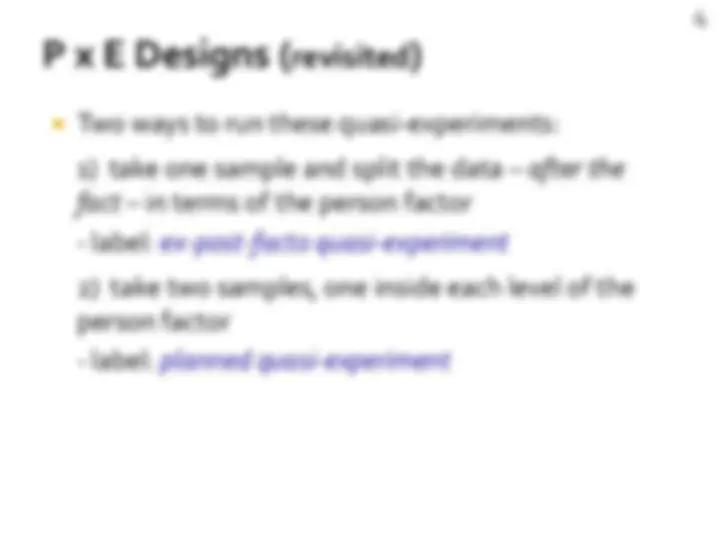
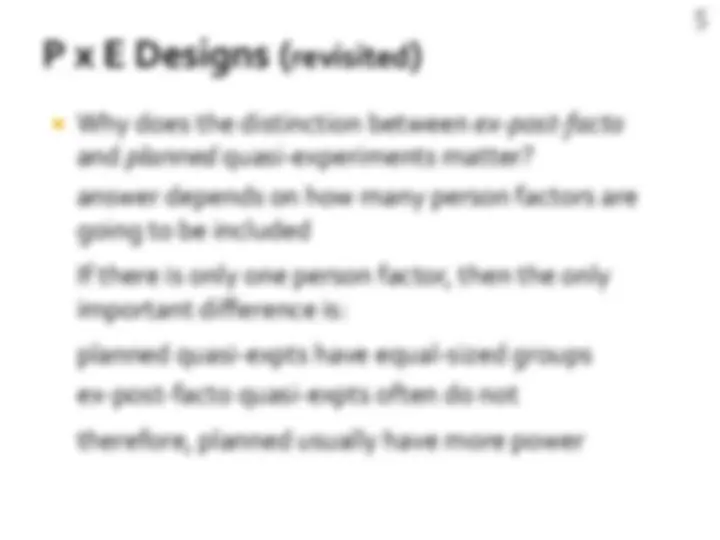
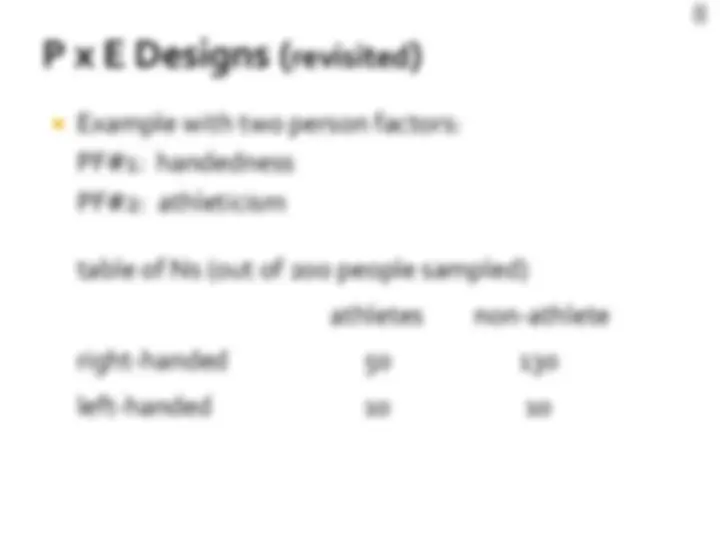
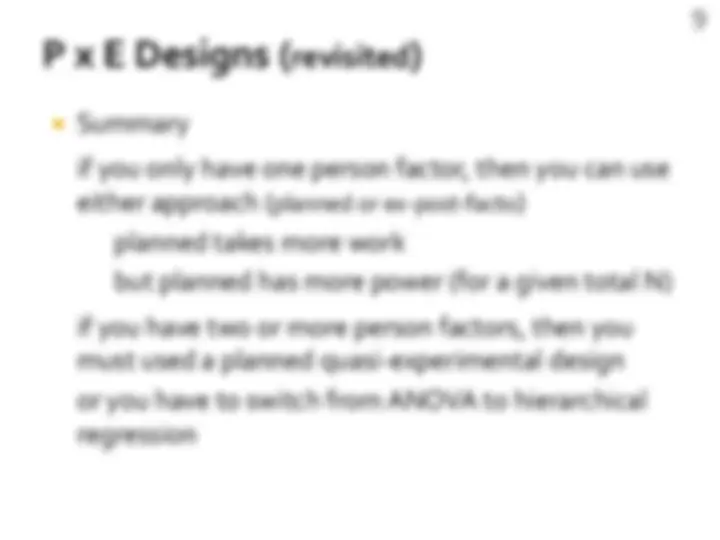
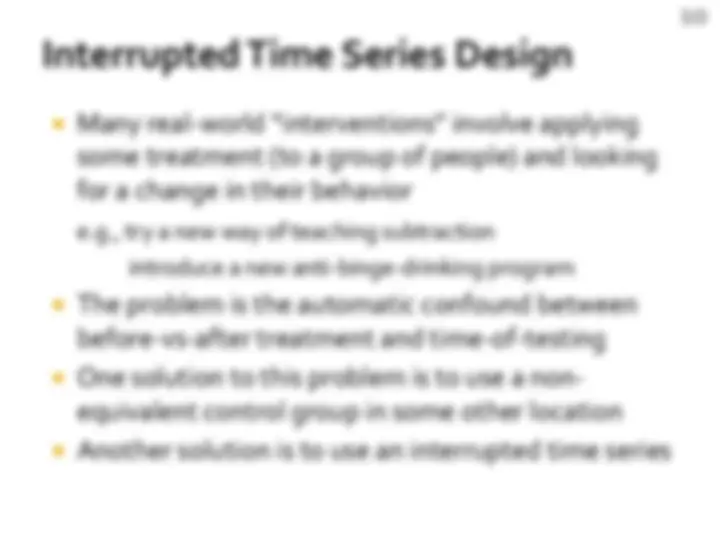
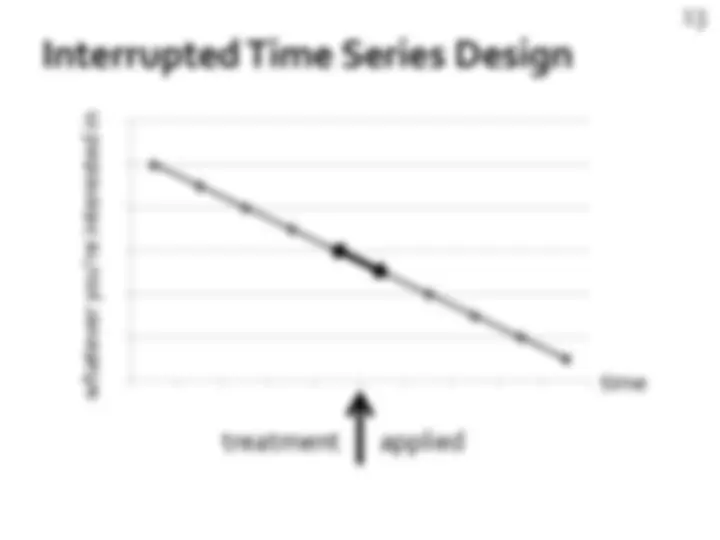
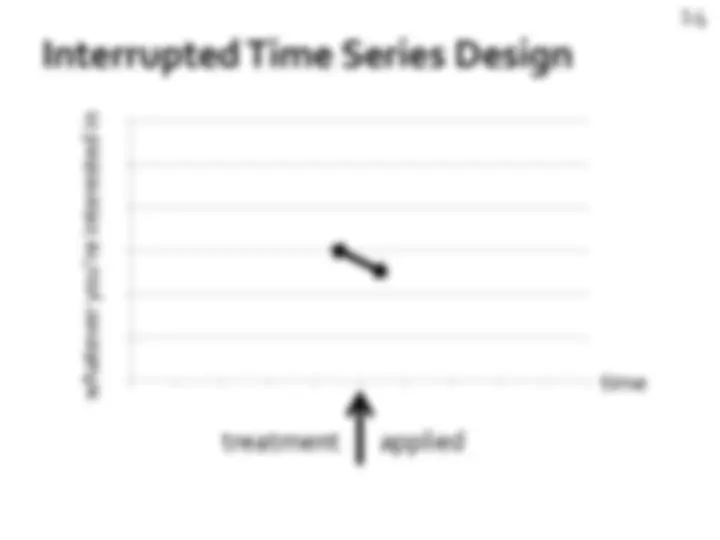
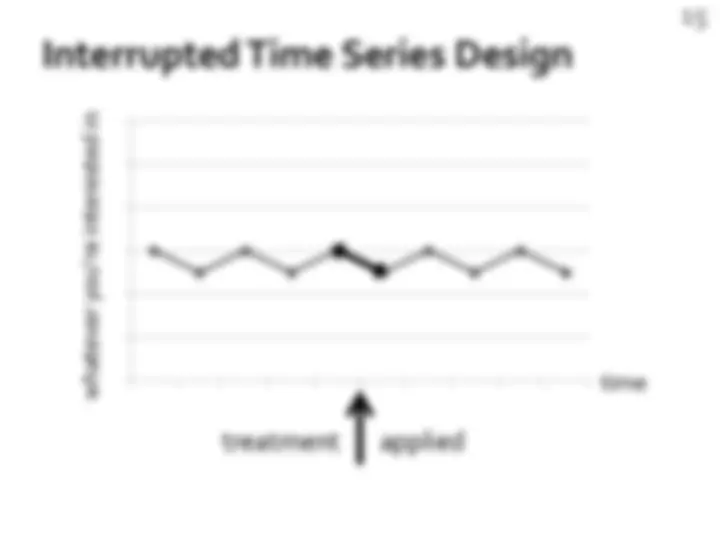
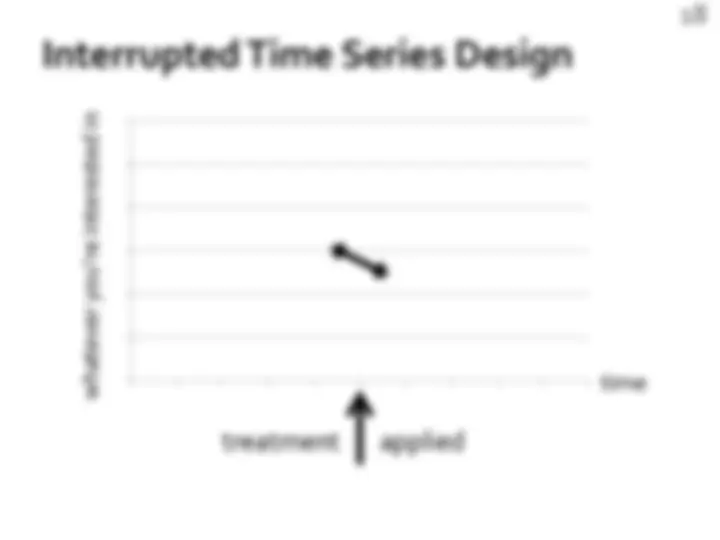
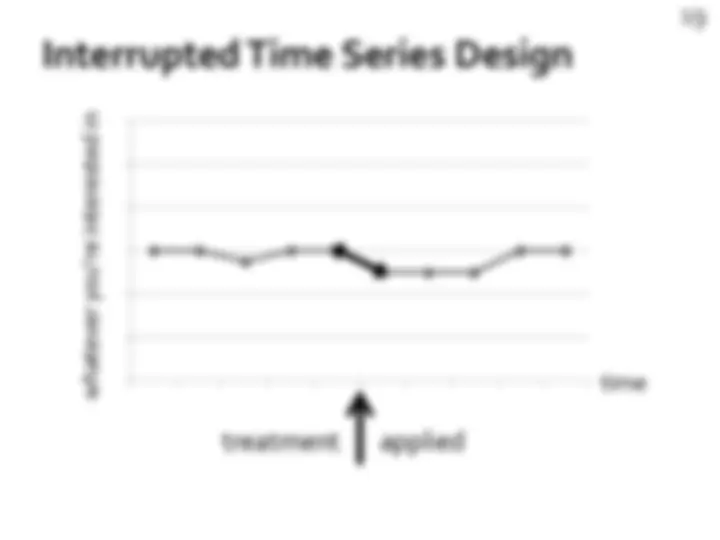

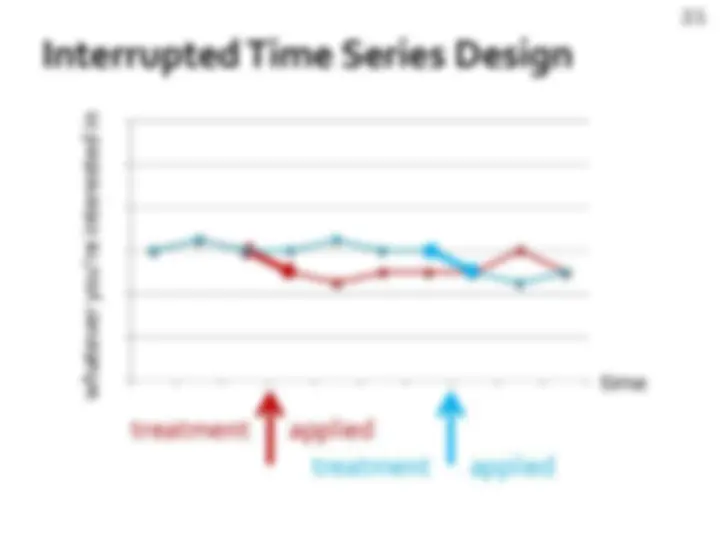

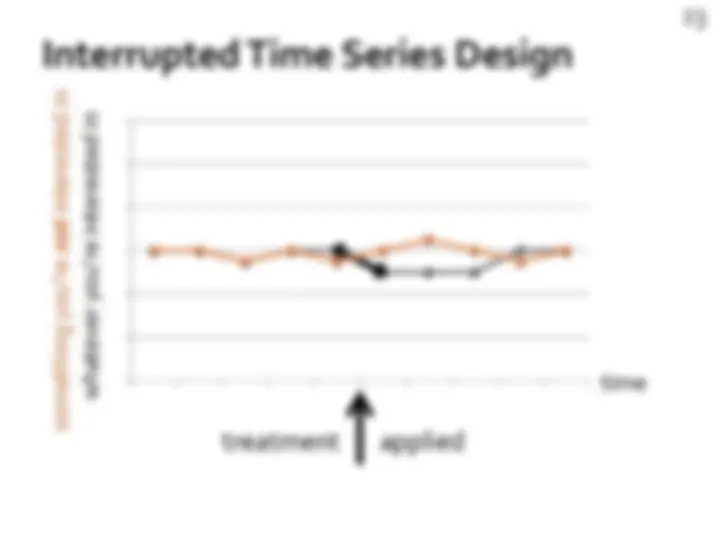


Study with the several resources on Docsity

Earn points by helping other students or get them with a premium plan


Prepare for your exams
Study with the several resources on Docsity

Earn points to download
Earn points by helping other students or get them with a premium plan
Community
Ask the community for help and clear up your study doubts
Discover the best universities in your country according to Docsity users
Free resources
Download our free guides on studying techniques, anxiety management strategies, and thesis advice from Docsity tutors
Two research designs commonly used in psychology: p x e designs (quasi-experimental designs) and interrupted time series designs. P x e designs involve manipulating one factor while keeping others constant, and the document explains the difference between ex-post-facto and planned quasi-experiments. Interrupted time series designs are used when investigating the effects of interventions on behavior, and the document suggests solutions to the problem of confounding treatment and time. The document also includes examples and summaries.
Typology: Study notes
1 / 23

This page cannot be seen from the preview
Don't miss anything!
















031:010 - Research Methods in Psychology – Spring, 2009 – April 2nd
1
P x E Designs (revisited)
Interrupted Time Series Designs
Two ways to run these quasi-experiments:
Why does the distinction between ex-post-facto and planned quasi-experiments matter? answer depends on how many person factors are going to be included If there is only one person factor, then the only important difference is: planned quasi-expts have equal-sized groups ex-post-facto quasi-expts often do not therefore, planned usually have more power
Example with two person factors: manipulated IV: stimulus-response compatibility PF#1: handedness (note: left-handers often show smaller SRC effects) PF#2: athleticism (note: athletes often show smaller SRC effects) Problem for the ex-post-facto approach: left-handers are more likely to be athletic (there’s a correlation between handedness and athleticism)
Example with two person factors: PF#1: handedness PF#2: athleticism
table of Ns (out of 200 people sampled) athletes non-athlete right-handed 50 130 left-handed 10 10
Many real-world “interventions” involve applying some treatment (to a group of people) and looking for a change in their behavior e.g., try a new way of teaching subtraction introduce a new anti-binge-drinking program The problem is the automatic confound between before-vs-after treatment and time-of-testing One solution to this problem is to use a non- equivalent control group in some other location Another solution is to use an interrupted time series
treatment applied
whatever you’re interested in^ time
is the drop in the DV due to the treatment or due to (anything related to) time?
treatment applied
whatever you’re interested in^ time
treatment applied
whatever you’re interested in^ time
treatment applied
whatever you’re interested in^ time
treatment applied
whatever you’re interested in^ time
treatment applied
whatever you’re interested in^ time
If you have access to a second group (with little or no possible “cross-talk” between groups): add a nonequivalent control group apply the treatment to both groups, but at different times ( staggered time series )